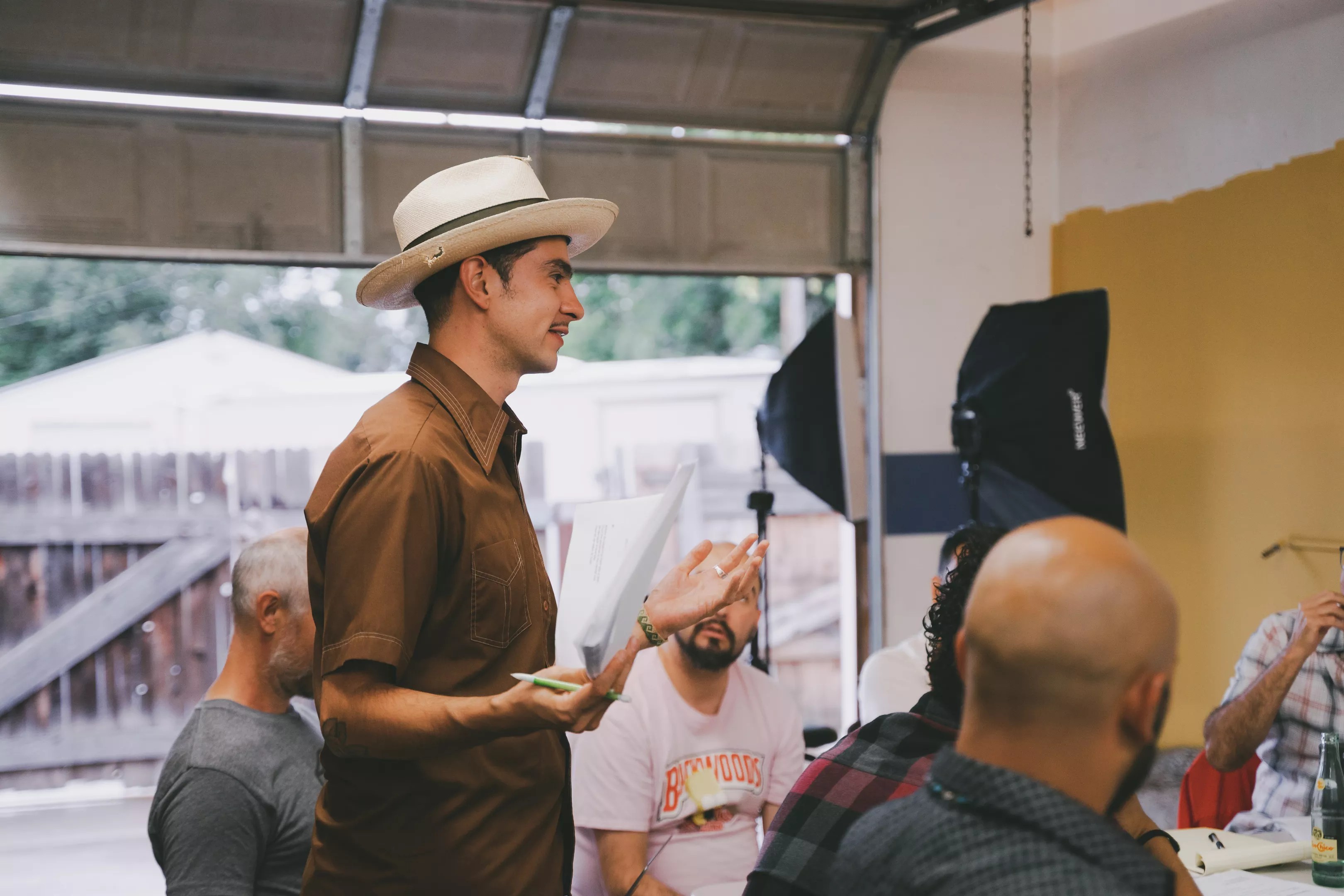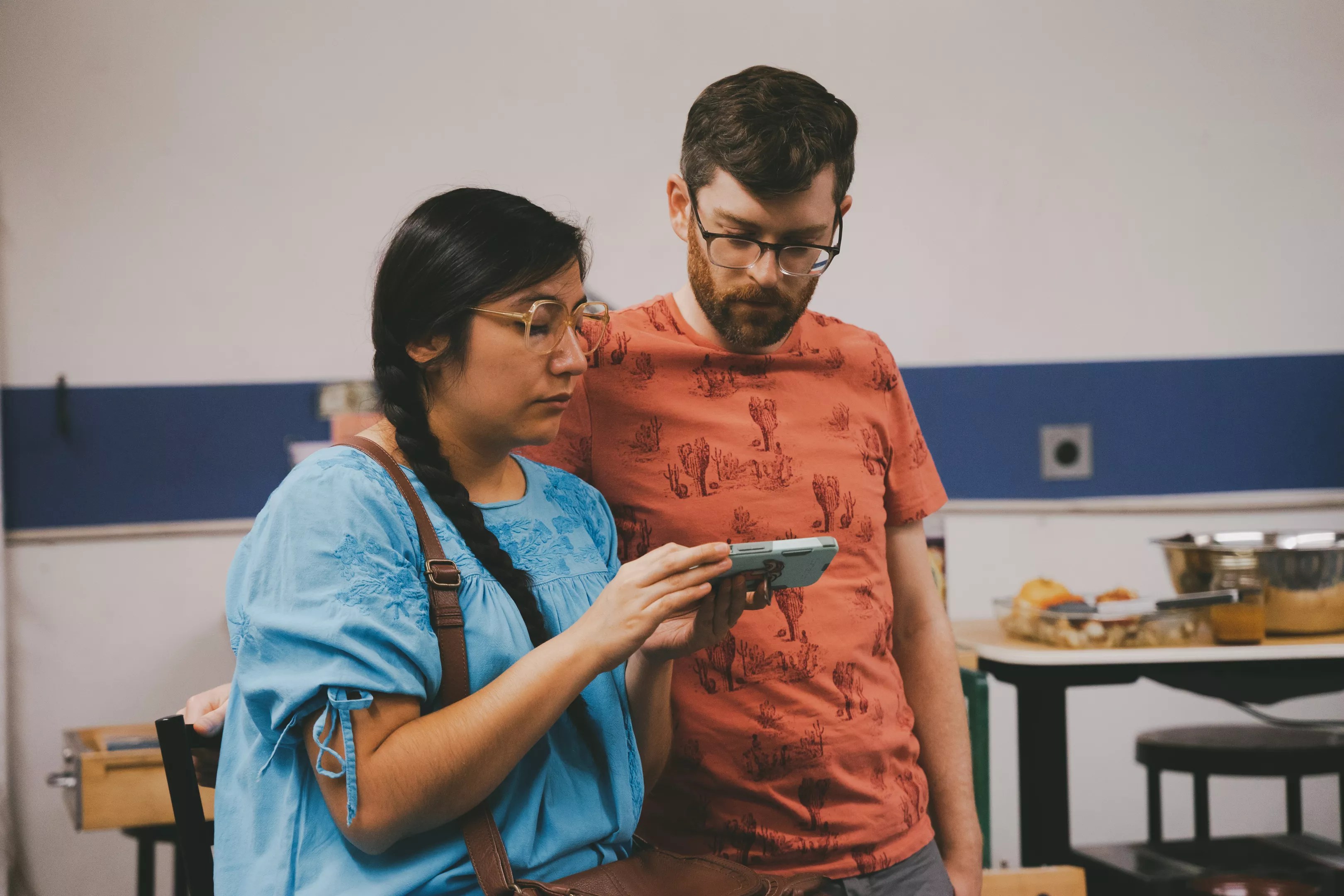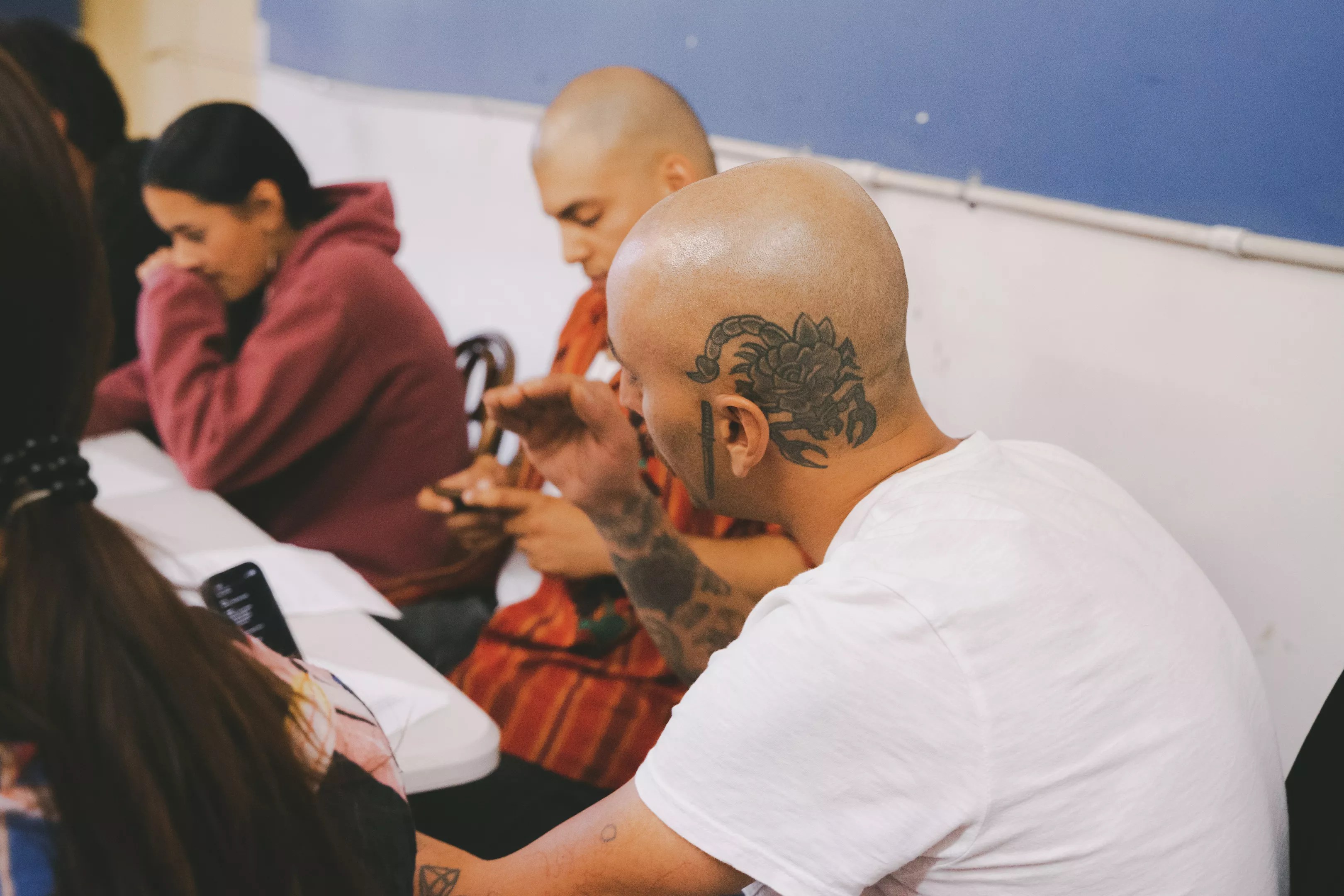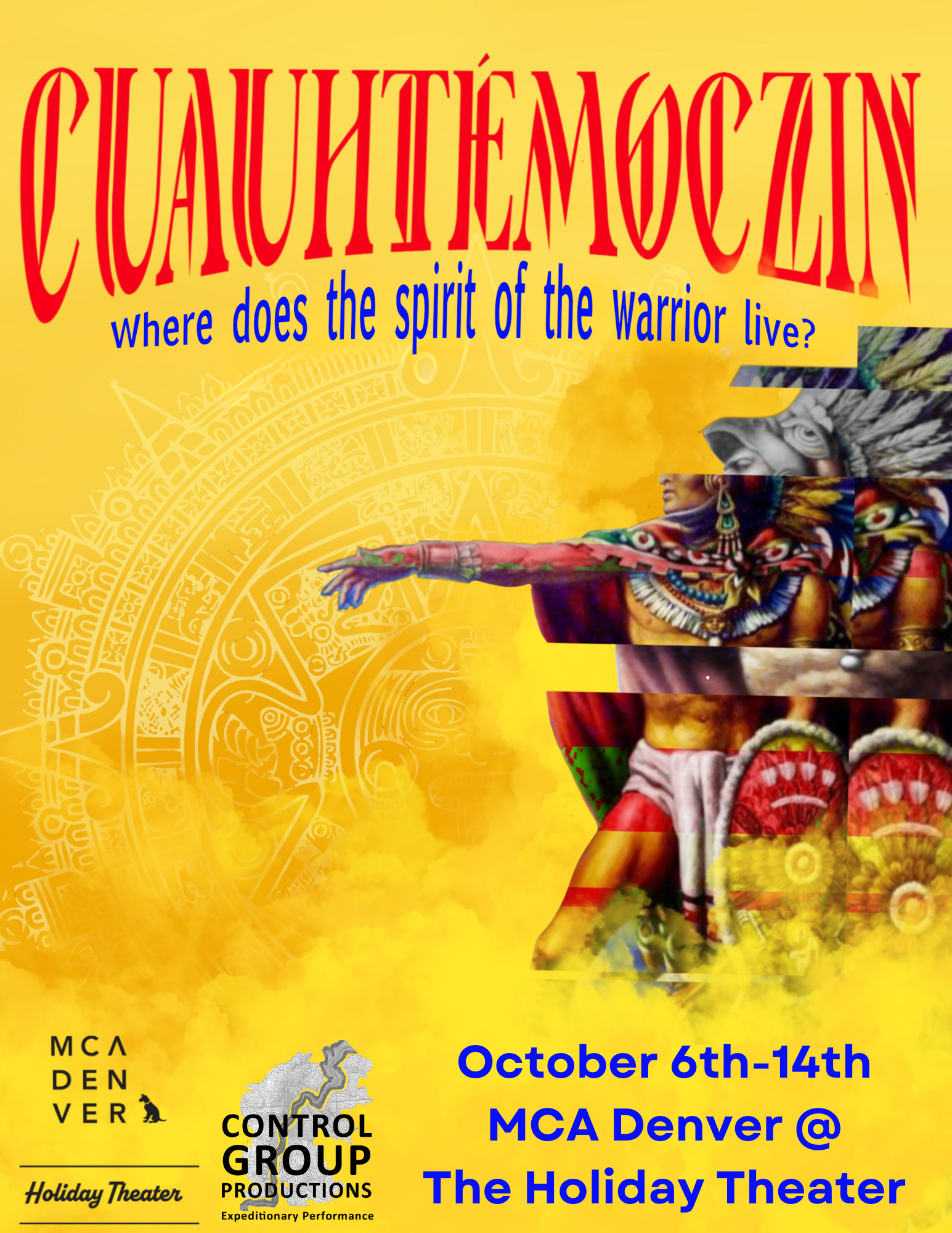
Courtesy of Anthony Maes

Audio By Carbonatix
Get ready to embark on a journey of myth and freedom when Control Group Productions presents the world premiere of the groundbreaking theatrical production Cuauhtémoczin, which explores the profound concept of liberation within the walls of a prison.
At the forefront of this innovative theatrical experience is the full-time poet, visual artist, musician and Denver “artivist” Diego Florez-Arroyo, who serves as the play’s author and creative producer. It’s Florez-Arroyo’s first theatrical production and is based on an epic poem he wrote while exploring the Chicago neighborhood of Pilsen, which he says has a “heavy Mexican culture.”
“Although I wasn’t familiar with [the area], I really felt this ancestral connection to its modern-day people,” Florez-Arroyo recalls. “This story first came out as a short epic poem and has been marinating in my mind.”
Florez-Arroyo began translating the poetry into theater while he was part of the Emerging BIPOC Playwrights Project earlier this year under the direction of Jon Marcantoni, in association with Flamboyán Theater and Control Group Productions. The mentorship program was created to assist new playwrights in understanding the development, production, networking, marketing and budgeting processes.
Will you step up to support Westword this year?
At Westword, we’re small and scrappy — and we make the most of every dollar from our supporters. Right now, we’re $20,000 away from reaching our December 31 goal of $50,000. If you’ve ever learned something new, stayed informed, or felt more connected because of Westword, now’s the time to give back.
“The chance to workshop the idea with Flamboyán Theater and Control Group gave me the drive to follow through on developing the show’s outline,” Florez-Arroyo says. “This has really taken my experience of theater to new horizons. I’m usually jumping around gig from gig, so I’m thankful to have a space for my multiple streams of expression to live and to be able to collaborate with others to make art.”
After a well-received workshop during the program, Cuauhtémoczin will make its debut on Friday, October 6, as the first original theatrical production co-presented by the MCA at its Holiday Theater, which the museum renovated in March and reopened in April.

“My soul feels like it’s healing and being guided to knowledge that wasn’t passed down to me,” says cast member David Rodriguez.
Courtesy of Anthony Maes
“The reading took place on April 22, and ever since then, we have been relying heavily on the audience’s feedback [we received] to help us fill out the range of emotions we want to convey,” Florez-Arroyo says. “This is a story that takes place in prison but is very allegorical. Even if you’ve never had the experience of prison, there are metaphorical prisons that we live within and are constantly trying to overcome. Getting connected to Control Group through their Emerging BIPOC Playwrights Project was a real turning point in the process. Because the initial workshop led by Jon Marcantoni was so brief, a lot of the work has been developed in rehearsals and comes from the actors and my fellow collaborators.”
Now that the play is finalized, anticipation for its debut production is palpable, with cast member David Rodriguez expressing, “With the play itself and with the people I’m connecting to working on it, my soul feels like it’s healing and being guided to knowledge that wasn’t passed down to me.”
The heart of Cuauhtémoczin lies in its narrative, which draws inspiration from ancient and contemporary stories. To capture the play’s essence, the team coined the term “mythological impressionism.” This unique descriptor encapsulates the fusion of mythology and impressionism that defines Cuauhtémoczin‘s style. Its narrative transcends traditional genre boundaries to connect the life of Dante, an inmate, to Cuauhtémoc, the last emperor of the Aztecs, who made the decision to instruct his people to conceal their traditions in order to survive while being conquered by Spain.
“Cuauhtémoc understood that the unification was going to happen, and it wasn’t going to be a peaceful one,” Florez-Arroyo explains. “In order to move forward in history, Cuauhtémoc decreed to his people that we need to hide our culture and beliefs in the protection of our homes until the new sun comes again, referencing 2012. And so in the 500 years of darkness that this sun has gone down, we have been existing in and content with our own capture.
“The work I make is inspired by storytelling – new and old stories that were created to encourage conversation around communal ancestral healing and to acknowledge and honor history: past, present and future,” he continues. “Cuauhtémoczin has been a cathartic expression of life lessons from the friends, family and community I am surrounded with. Dante’s connection to his mother reflects the connection I have to my own mother. Being surrounded by people who have served time in jail and prison, I was forced to understand the humanity in their struggle. Watching friends and family fail in ‘civilian’ life circumstances while cheering others as they triumphantly emerge from their darkest depths.”

Actors rehearse for Cuauhtémoczin, which draws inspiration from ancient and contemporary stories.
Courtesy of Anthony Maes
With an enthralling multimedia performance, Cuauhtémoczin takes viewers on a journey of self-discovery through the most extreme isolation while also giving them a glimpse of Aztec culture and inspiring their own inner warrior. In addition to Florez-Arroyo’s crystal-clear vision for his work, the play is fueled by the incredible team he has assembled. At the helm are veteran director Phil Luna and assistant director Cipriano Ortega, who are committed to bringing the play’s core humanist vision to life.
“I got a call from Diego in July, and we met to talk about the project,” Luna recalls. “I thought the play was pretty good, but I wasn’t interested in just another Chicano-in-prison play. That’s where the idea of the allegory came in. … I was influenced by the Group Theatre from the 1930s, and so my whole approach to this has been collaborative. I don’t do well in hierarchies, especially in artistic situations. I don’t believe in that ‘one great man’ theory – I think that’s bullshit. I really wanted to use this as a learning opportunity for these guys. I’m sort of the witness to their true authentic talent and helped them realize the play.”
“It’s nice to be around other men and people of color in the theater realm,” adds Ortega. “What’s wonderful about Diego is he really tries to unify the spirituality in a very realistic and tactile way. It isn’t just grasping at concepts.”
The directing team is joined by a vibrant cast of Diego Estrada, Dillon Autry, Kian Way, Hannah Lucero, Sid Madrid, Lynn Mandziuk, Nina Marti, Jesse Pacheco, Noah Pacheco and David Rodriguez, which includes published authors, internationally recognized musicians, professors, seasoned producers and a crew of multi-talented artists. One of the play’s distinguishing features, according to stage manager and assistant producer James Jewkes, is its unique technical approach to theater.
“We are really utilizing silence and darkness,” Jewkes says. “A lot of times when people are thinking of making a play, they think about how they’re going to light it up; however, we’re utilizing the void in a lot of ways. … There is also some real innovation for theater fans. Some of the choices that we have made will be really refreshing for people who are kind of tired of the status quo with theater – so theater heads, rejoice!”

Courtesy of Control Group Productions
Something that also stuck Ortega about the project was the opportunity to break free from artistic stereotypes. “Sometimes Latino theater can be pigeonholed into the magical realism genre, but what’s great about this show is its transcendent of a lot of those tropes while still being very rooted in that world,” Ortega explains. “Latino theater can be very anti-Western. They don’t want to watch Shakespeare or anything European, and while that’s fine to some extent, we think it’s okay to borrow from those sources and make them our own. We’re using these older ways of presenting action on a physical stage but recontextualizing them to make something new.”
With Cuauhtémoczin, it’s evident that a new generation of playwrights and artists is taking center stage, pushing the boundaries of what theater can achieve. Luna notes that this kind of work is only possible because organizations are willing to nurture new voices and ideas in the theater.
“It’s important to always develop new playwrights,” Luna says. “It’s like what Robert Plant said of rock and roll: We’re just one big happy family of beggars and thieves. That’s what art is all about. We take what works from these old forms to build something new, and that’s exactly what [Cuauhtémoczin] is doing. I’m so glad it’s their time for these young men to have their voices heard. We need to support young playwrights so we can get all kinds of plays.”
Cuauhtémoczin, Friday, October 6, through Saturday, October 14, Holiday Theater, 2644 West 32nd Avenue. Find tickets ($5-$50) at mcadenver.org/holiday-theater.